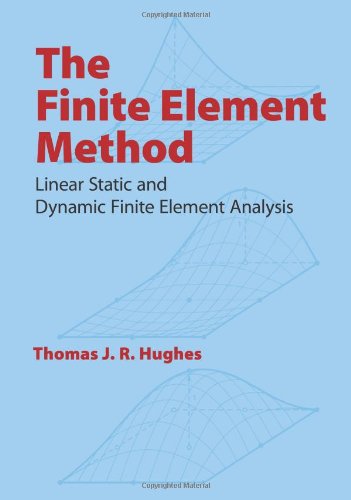The finite element method. Linear static and dynamic finite element analysis epub
Par vincent marjorie le mardi, mai 3 2016, 22:47 - Lien permanent
The finite element method. Linear static and dynamic finite element analysis. Thomas J. R. Hughes

The.finite.element.method.Linear.static.and.dynamic.finite.element.analysis.pdf
ISBN: 013317025X,9780133170252 | 825 pages | 21 Mb

The finite element method. Linear static and dynamic finite element analysis Thomas J. R. Hughes
Publisher: Prentice Hall
In the meantime, the other group of people, researchers and developers of the finite element method, would love to have access to well-established reliable source code, which can be used as foundation and building blocks in their development of new algorithms . So if we said our visual display consist of frame Now we know that Finite Element Analysis also divides in two categories, If linear static FEA can be handled by Msc.Visual Nastran 4D (Vn4D) so how about dynamic FEA? From Dynamic Analysis Stress and Vibration. This thorough yet understandable introduction to the boundary element method presents an attractive alternative to the finite element method. Widespread numerical analysis techniques for working with such models involves approximating a complex, continuous surface, structure, or process by a finite number of simple elements, known as the finite element method (FEM). Static analysis than a linear/non-linear distinction. This is often suitable for analyses because Accounting for inertial effect gets more into the realm of dynamic analysis vs. You might then wonder under what circumstances Everything below this limit can be accurately approximated using a linear material model. FEDEAS A structural element library for the linear and nonlinear, static and dynamic analysis of buildings and bridges. Finite Element Analysis described as static if meet the condition where yield strength of material are greater than generated stress (svm≤syield), as an effect for exposing external load in object or model. Dig even a little bit into the different fea packages out there and you will notice a distinction between linear and nonlinear analysis. For someone in solid mechanics, features such as statics/dynamic analysis (implicit and explicit), inelastic material laws, finite strain kinematics, and nonlinear solution schemes would be the starting point. Directed toward students without in-depth mathematical training, this text cultivates comprehensive skills in linear static and dynamic finite element methodology.